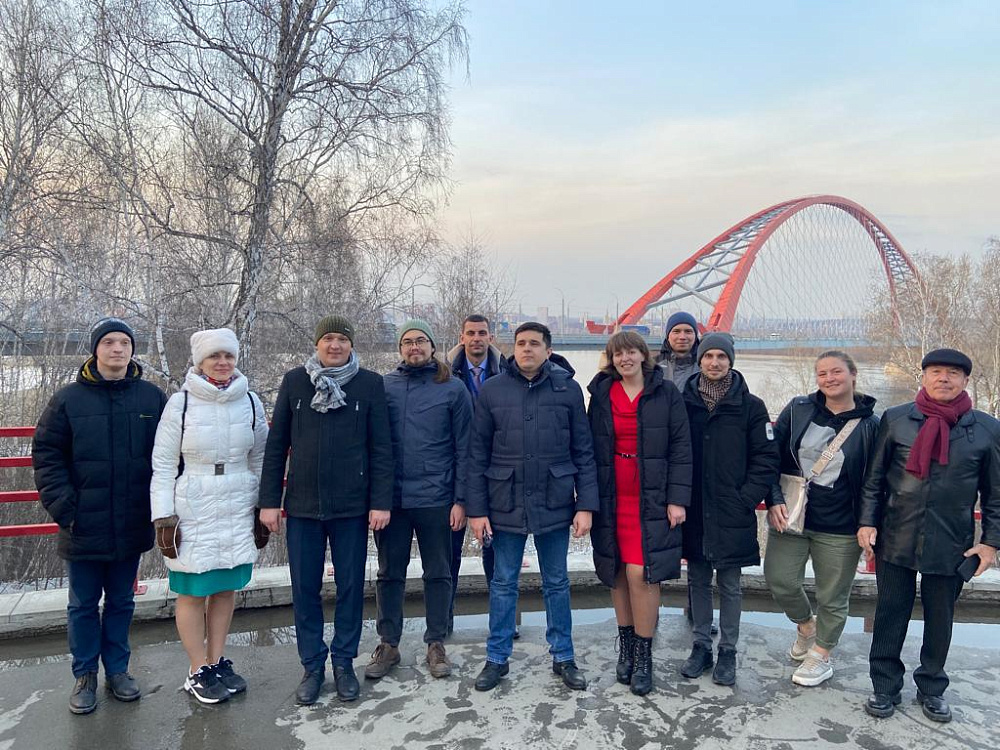Nikolay Kozak, Senior Lecturer at the SPbGASU Department of Roads, Bridges and Tunnels, took part in the international scientific and practical conference "Research, design, construction and operation of bridges: problems and solutions throughout the life cycle." The conference was held by the Siberian Research Institute of Bridges - a research center that is a structural subdivision of the Scientific and Engineering Road Center of the Siberian State Transport University (Novosibirsk). We asked a young scientist to tell us about this event.
– The program was divided into three parts. On the first day, issues of bridge operation were discussed, on the second day - bridge design, on the third - construction issues. The most appealing for me were the presentations related to my professional interests - information technologies in the field of bridge building, as well as diagnostics and testing of structures. Now is just such a time when, it seems, these areas are as close as possible to each other. There have been several reports on the use of artificial intelligence and neural networks in inspections to detect defects and damage. Researchers from the Siberian Research Institute of Bridges presented their new development - a software package for calculating bridge structures; there were reports on methods of automated processing of experimental data - for me this topic is very relevant, since I myself, as part of my dissertation research, wrote a program that helped me process huge amounts of monitoring data in a few days. In addition, there were interesting reports on studies of the dynamic characteristics of superstructures.
But, of course, the conference is not only reports. I would even say that speeches are often secondary, since the most valuable thing happens between sessions, in the process of getting to know and further live communication with colleagues. The reports are discussed, as well as promising areas of research, and problems of the industry. For young scientists, this is very important, because this is how a network of professional acquaintances is formed. After such conferences, the authors you once referred to cease to be just names, but become living researchers with whom you can always contact and discuss issues, find a solution to the problem.
– What was the topic of your report?
– I made a presentation on the topic of improving the methodology for testing the endurance of flexible pin stops in steel-reinforced concrete bridges. These are small elements between the steel beams and the reinforced concrete slab, which nevertheless play a very important role in the operational reliability of the structure. Methods for calculating these elements for strength are well developed today, but in the case of endurance, there are unexplored areas. Although endurance testing is very important for them, as they are constantly subjected to varying loads from passing traffic.
– How long have you been working on this topic?
– I have been working on this topic for five years now. I have spoken at conferences in Moscow, Prague, Guimarães (Portugal), published articles in Russian and foreign journals. Such research is always a team effort. My supervisor is visiting professor at the Department of Roads, Bridges and Tunnels Vladimir Apolinarevich Bystrov. Throughout the study, colleagues from the department also help me: Dmitry Andreevich Yaroshutin, Nikolay Yuryevich Dalyaev, Anton Vladimirovich Syrkov.
– What exactly do you propose to improve?
– I proposed to change the methodology for testing endurance in our standards in such a way that it could also be used to test flexible pin stops. In addition, I introduced several coefficients into the verification formula, which allow you to more accurately take into account the mode of operation of the elements under real loads. To determine these coefficients, we conducted an experiment on the operated bridge - during the overhaul, load cells were placed on the stops, which were then connected to the measuring system.
The uniqueness of the experiment was that data were obtained on the stress-strain state of the elements of the conjunction under the conditions of their work in a real operating structure. Previously, as a rule, the stress-strain state of the stops was studied in laboratory conditions, on benches. In my experiment, strain gauges were glued directly to the supports during the reconstruction of the bridge and subsequently filled with concrete of the roadway slab. Then, an experiment was carried out in two stages: at the beginning, one load in the form of a truck crane drove over the bridge, then, at the second stage, a regular traffic flow passed over the bridge. As a result of the experiment, it was possible to numerically determine the coefficients characterizing the mode of operation of the elements of the conjunction.
– What are your further plans?
– I plan to defend my PhD thesis soon. At the moment, I am expanding the topic of research, moving from directly testing the endurance to the operational reliability of flexible pin stops in general. Now I am conducting a small study of the effect of reducing the stiffness of the elements of the conjunction on the general state of the structure of the superstructure.



